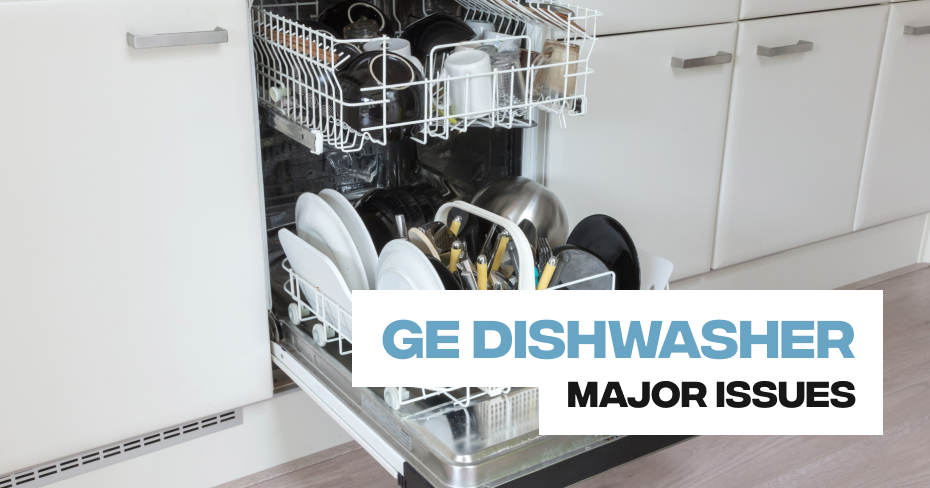
GE Dishwasher Won’t Dry Dishes
You may not even notice that your dishwasher dries dishes until a problem leaves them dripping wet. Why does my GE dishwasher not dry the dishes properly? Using water that’s too cool can slow evaporation, leaving dishes wet. When you find your GE dishwasher not drying dishes like it should, try these troubleshooting tips.
GE Dishwasher Not Drying Dishes? Here’s What To Do.
In most cases, a simple adjustment to dishwasher use and care can have drier results. From modifying your loading practices to using rinse aid, here’s how to fix a GE dishwasher not drying dishes.
1. Ensure The Dishes Are Loaded Properly
Improper loading is one of the most common reasons a GE dishwasher leaves dishes wet. Overloading racks with too many dishes or using racks incorrectly restricts airflow between items, leaving them wet. Washing too many plastic items in one load can also hamper drying, as plastic retains moisture longer than other materials.
Follow these dishwasher loading tips to improve drying performance:
- Bottom rack: Reserve for dishes, cookware and serving plates. Load one dish in between each of the tines to ensure adequate space between each and place larger items along the rack’s perimeter.
- Top rack: Designed for cups, glasses and bowls. Place these concave items upside down and at an angle for improved rinsing, airflow and drying.
- Silverware basket: Avoid nesting and improve drying by alternating forks, knives and spoons next to each other.
2. Make Sure The Dishwasher Is Using Hot Water
Hot water is key in how to prevent a dishwasher breakdown, as it prevents the residue buildup that causes many malfunctions. In addition, it not only cleans better but evaporates faster, improving drying. Do GE dishwashers heat water? Even when connected to a hot water supply, most dishwashers use a heating element to ensure that water is heated to 145℉.
If your dishwasher isn’t drying dishes sufficiently, make sure it’s properly connected to your hot water supply. If water from the kitchen faucet doesn’t reach at least 120℉, your home’s hot water heater may require an adjustment.
3. Check That The Dishwasher Drying Features Are Selected
If your GE dishwasher doesn’t dry as well as you expect, make sure you’ve selected any available drying features. Most dishwashers have a “Heated Dry” feature that heats the air for more thorough drying. Some dishwashers have additional drying functions that increase the water temperature or elongate the drying cycle for improved performance.
All of these features must be manually selected along with your wash cycle. Always check the dishwasher control panel before starting a wash cycle to ensure that a drying function is selected.
4. Try Adding A Rinse Aid
Rinse aid’s primary function is much more important than making dishes sparkle. This essential additive breaks down the surface tension of water droplets so they easily run off dishes and glassware, improving drying. Always add rinse aid before each wash cycle. If you find your GE dishwasher not drying dishes, make sure the rinse aid dispenser is working properly. Some dispensers can also be adjusted to add more rinse aid for better drying.
5. Unload Dishes In The Right Order
While proper loading practices can fix a GE dishwasher not drying dishes, how you unload items is just as important. If you unload the top rack first, residual water may drip onto items below. Always unload the bottom rack first so any water from above falls on an empty rack when items are unloaded.
Schedule Appointment